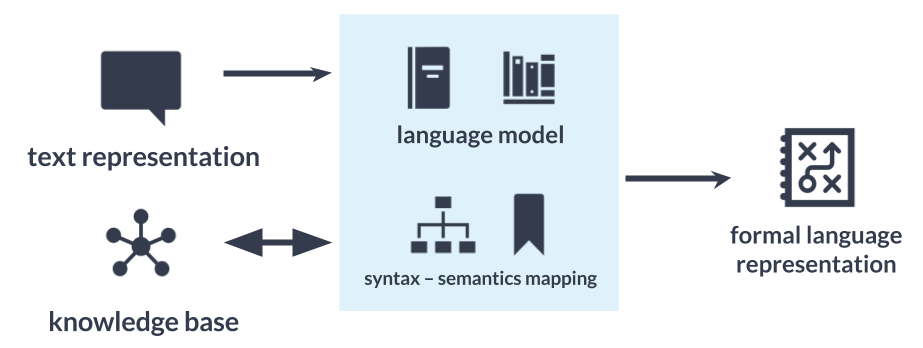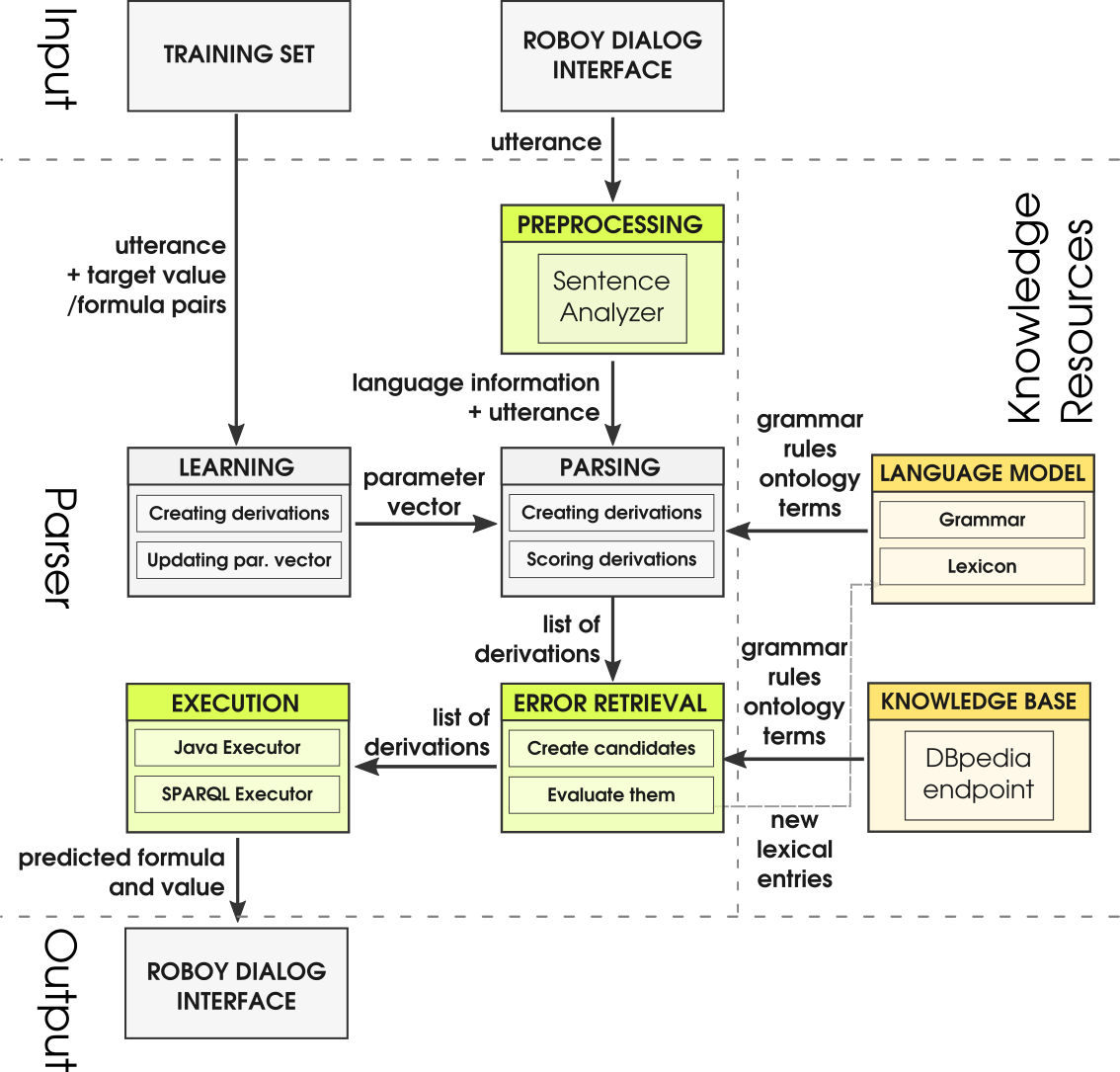Natural Language Understanding (NLU)¶
The NLU submodule is used to translate text inputs into formal semantic representations. This allows for capturing the semantic intent behind a statement or question, and using knowledge bases to translate formal question representations into answers.
The roboy_parser NLU module is based on SEMPRE <http://nlp.stanford.edu/software/sempre/>. It is currently being modified to fulfill Roboy Dialog system needs.
Installation¶
The NLU module is installed automatically when running mvn clean install in roboy_dialog.
Architecture¶
Semantic parser is based on the language model and NLP algorithms that then apply rules to the utterance to translate it. Language model consists of: - set of grammar rules, - lexicon, - training dataset.
General architecture can be seen on the diagram below.

| alt: | Semantic parser general architecture |
|---|
Implementation¶
NLU is a JAR dependency, with which the dialog system is communicating through the edu.stanford.nlp.sempre.roboy.SemanticAnalyzerInterface class. Dialog system has a client implemented in SemanticParserAnalyzer.java class.
The current parser was modified from SEMPRE and currently has following components

| alt: | Semantic parser components |
|---|
Functionalities¶
Roboy parser currently has currently following functionalities:
| Functionality | Software used | Summary |
|---|---|---|
| Tokens | OpenNLP | Tokenized utterance |
| POS Tags | OpenNLP | Tagging tokens as part of speech |
| NER Tags | OpenNLP | Tool used to tag named entities like PERSON, NUMBER, ORGANIZATION |
| Triple extraction | OpenIE | Tool used to extract triples from sentences in form (Subject,Predicate,Object) |
| Parser result | Parser | Logical representation of an utterance |
| Parser answer | Parser | Answer for resulting parser result |
| Follow-up | Parser | Follow-up questions for underspecified term |